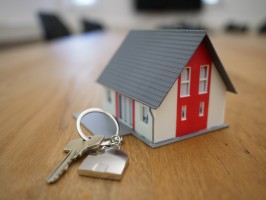First Steps for Getting into Real Estate Investment
The real estate market is fascinating; it is not only about numbers but your strategic and research skills too. You can gain a lot from a real estate property if you invest in the right manner.
Many people are unaware of investing in the "right manner," read below to find some steps to get started.
1. Do Your Real Estate Research
Ensure that you have done your research about the real estate markets before you move on to the next steps. Choose a place where you want to invest and then browse the houses in that area before you discover one that's relatively cheap compared to the area. A house will be cheap because it's outdated and requires a lot of effort in the form of your investment. Realtors call this type of property “a special handyman" and often market it in the newspapers like that.
2. Pay the Lowest Down Payment Possible
Once you've found a place that's relatively cheap compared to the area and the one that you can repair, you should get ready to buy the property with the lowest cash down payment imaginable. Very often, the seller would encourage you to "no money down" buy the house, particularly if he's keen to move elsewhere and wants to get out of the mortgage repayments. If this is not possible, you can sometimes get the owner to carry back on the property a second mortgage or trust deed for a sum that covers much of his in-house equity.
3. Move-In and Get to Work
You take possession of the property, move in, and continue spending days and weekends to upgrade and rebuild your investment doing most of the work yourself. If required, you should take woodworking and home building lessons, purchase your equipment, get tips from other individuals who have home renovation experience, and slowly learn how to go about it yourself.
4. Take Action to Maximize Your Investment
When the property is updated and converted to something that looks good, then you can opt for three options:
- First, you may sell the house at a higher price than you bought it for. You could then take the profit from the house sale and buy another house for restoration and refurbishment.
- Second, you could rent out the house for a monthly premium that includes more than the mortgage repayments and also allows you additional cash flow.
- Third, you have the option to rent the refurbished home, then go to a bank to refinance the estate, sometimes for as much as you invested on it, depending on the property's current earning power as leased out to a tenant.
You can get a better valuation of the property value with a tenant owing you a certain amount of money each month. The bank gives you more, or, depending on this evaluation, you can acquire a new mortgage on your savings.
5. Repeat the Process
You could then repeat the process with yet another, maybe bigger house, spend your "sweat equity" or human capital in the improvements until you are prepared to sell, lease or refinance it again.
6. Move Up to Larger Properties
Once you keep repeating this process, as you move up to duplexes, triplexes, fourplexes, and finally apartment buildings, you gain the capacity to grow your income, savings, your cash flow, and your expertise.
Many of the world's greatest real estate successes began with an individual buying a single home, and then working on it to repair it themselves. They then sold the house, purchased another one, and spent their money in the reconstruction of that property. They gradually built a property empire that included thousands of housing units. If you want to be one of them, start looking for your investment property on Houses Directory to secure the best one.
